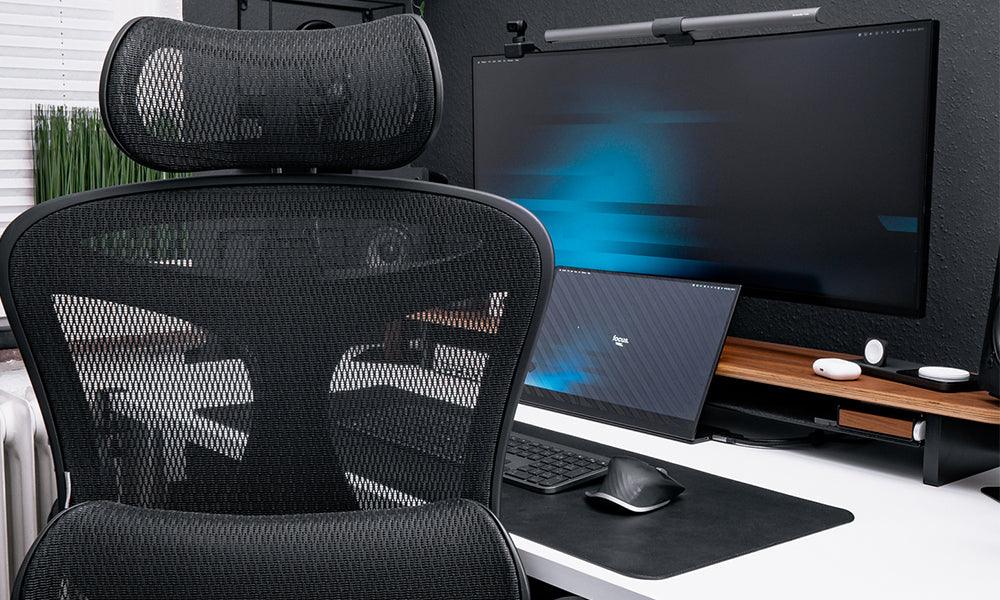In the competitive world of today, individuals spend a significant portion of their lives working in office environments. As the nature of work becomes increasingly sedentary, the importance of creating a comfortable and supportive workspace cannot be overstated. One crucial element that contributes to a healthier and more productive work environment is the presence of proper lumbar support in ergonomic office chairs.
This article explores the significance of lumbar support in ergonomic chair, shedding light on its impact on health, comfort, and overall workplace productivity. From understanding the basics of lumbar support to exploring the latest advancements in ergonomic chair design, we will delve into the various aspects that make lumbar support a key factor in creating an ideal office setup.
Section 1: The Basics of Lumbar Support
1.1 Understanding the Lumbar Region:
The lumbar region, located in the lower back, consists of five vertebrae that bear the majority of the body's weight. This region is prone to stress and strain, especially during prolonged periods of sitting. Proper lumbar support aims to maintain the natural curve of the spine, reducing the risk of discomfort and long-term health issues.
1.2 The Consequences of Poor Lumbar Support:
Without adequate lumbar support, individuals may experience a range of health issues, including lower back pain, poor posture, and increased fatigue. Over time, these problems can escalate to more severe conditions such as chronic back pain, disc herniation, and decreased overall well-being.
Section 2: The Ergonomic Revolution
2.1 Rise of Ergonomic Office Furniture:
The concept of ergonomics has gained prominence in recent years as workplaces recognize the importance of designing environments that prioritize employee well-being. Ergonomic office chairs, specifically designed to support the natural movements and postures of the human body, play a pivotal role in creating comfortable workspaces.
2.2 Key Features of Ergonomic Chairs:
Ergonomic office chairs are characterized by various features that contribute to enhanced comfort and support. Adjustable seat height, proper seat depth, and armrest adjustments are among the essential elements. However, the focus on lumbar support stands out as a game-changer for preventing and alleviating lower back issues.
Section 3: Health Benefits of Lumbar Support
3.1 Reducing Lower Back Pain:
One of the primary benefits of lumbar support is its ability to reduce lower back pain. Properly designed ergonomic chairs provide targeted support to the lumbar region, preventing strain and discomfort associated with extended periods of sitting.
3.2 Improving Posture:
Maintaining good posture is crucial for overall musculoskeletal health. Lumbar support encourages individuals to sit with a more upright and natural spinal alignment, reducing the risk of slouching or adopting poor postures that can lead to chronic issues.
3.3 Enhancing Circulation:
Adequate lumbar support also contributes to better blood circulation. When the lumbar spine is properly supported, it promotes a more comfortable and relaxed sitting position, preventing numbness or tingling sensations in the legs that may arise from prolonged periods of sitting without proper support.
Section 4: Choosing the Right Ergonomic Chair
4.1 Adjustability and Personalization:
No two individuals are alike, and preferences for chair settings may vary. The best ergonomic chairs offer a high degree of adjustability, allowing users to customize the chair to their specific needs. This includes adjustable lumbar support to accommodate different body types and preferences.
4.2 Materials and Durability:
Investing in a quality ergonomic chair with durable materials is essential for long-term use. Chairs with high-quality lumbar support systems, such as adjustable lumbar pads or built-in lumbar curves, ensure lasting comfort and support.
Section 5: Technological Advancements in Lumbar Support
5.1 Intelligent Lumbar Support Systems:
As technology continues to advance, so do the features of ergonomic office chairs. Intelligent lumbar support systems, equipped with sensors and responsive mechanisms, automatically adjust to the user's movements, providing dynamic and personalized support throughout the workday.
5.2 Ergonomics in the Digital Age:
With the rise of remote work and the prevalence of digital technologies, ergonomic office chairs are adapting to meet the needs of modern work environments. Some chairs now come with built-in connectivity, allowing users to monitor their sitting habits and receive reminders for posture adjustments.
Section 6: The Cost of Ignoring Lumbar Support
6.1 Increased Absenteeism and Reduced Productivity:
A workplace that neglects the importance of lumbar support may face higher rates of absenteeism due to health-related issues. Employees experiencing discomfort or pain are more likely to take sick days, leading to a decline in overall productivity.
6.2 Long-term Health Costs:
Ignoring the need for proper lumbar support can result in long-term health costs for both employers and employees. Chronic back pain and musculoskeletal disorders may lead to increased healthcare expenses, rehabilitation, and potential disability claims.
Section 7: Tips for Maintaining Lumbar Health
7.1 Incorporating Regular Breaks and Movement:
Encouraging employees to take regular breaks and incorporate movement into their daily routines is essential for preserving lumbar health. Simple stretches and exercises can help alleviate tension and reduce the risk of stiffness associated with prolonged sitting.
7.2 Employee Education and Training:
Educating employees on the importance of proper ergonomics and lumbar support is crucial. Training programs that teach individuals how to adjust their chairs, maintain good posture, and recognize the signs of discomfort can contribute to a healthier workplace culture.
Conclusion
In conclusion, the importance of lumbar support in ergonomic office chairs cannot be overstated. As workplaces evolve to prioritize employee well-being and productivity, investing in quality ergonomic chairs with proper lumbar support becomes a strategic decision. From reducing lower back pain to improving posture and overall health, the benefits of prioritizing lumbar support extend far beyond mere comfort. By understanding the basics of lumbar support, exploring the latest ergonomic advancements, and implementing proactive measures, employers and employees alike can create a workspace that fosters health, happiness, and peak performance.



































